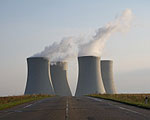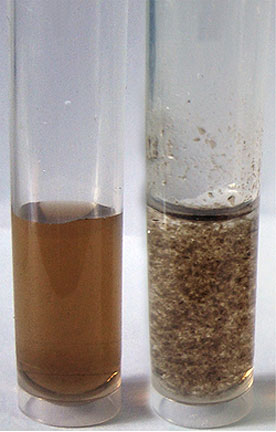Soaking up Nuclear Waste with Graphene Oxide
 Jan-14-13
Researchers have developed a method of using graphene oxide to remove radioactive material from contaminated water, making clean-ups both easier and safer.
Jan-14-13
Researchers have developed a method of using graphene oxide to remove radioactive material from contaminated water, making clean-ups both easier and safer.The teams, from Rice University and Lomonosov Moscow State University, found that graphene flakes are efficient than other materials currently in use, such as bentonite clays and activated carbon. The larger surface area of the graphene flakes allows them to absorb a greater amount of toxins, and the clumping action occurs very quickly—within minutes.
According to Rice chemist James Tour, adding graphene oxide to a huge pool of radioactive material results in a solid material of ions that can be skimmed from the water. The graphene will burn off very quickly, leaving behind a cake of radioactive material that can be reused.
Image; Anna Yu. Romanchuk/Lomonosov Moscow State University
The vial at left holds microscopic particles of graphene oxide in a solution. At right, graphene oxide is added to simulated nuclear waste, which quickly clumps for easy removal.

More Info about this Invention:
[DVICE.COM][RICE UNIVERSITY]

Add Your Comment